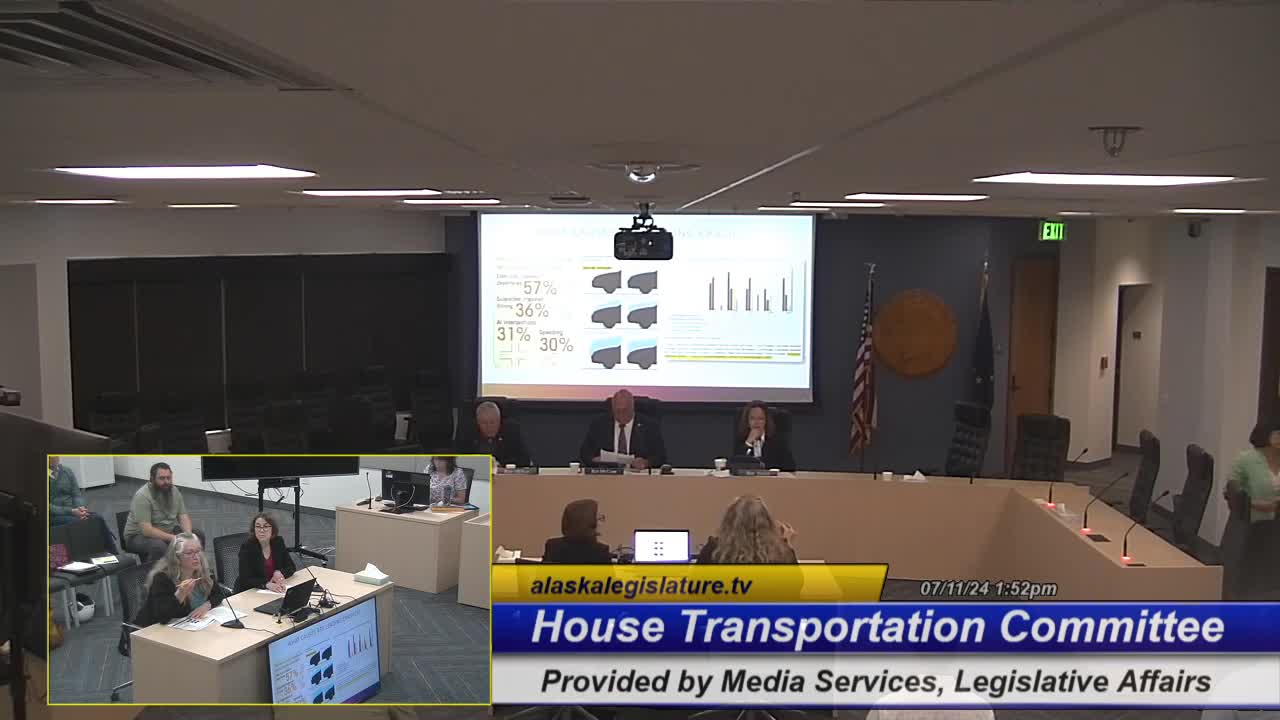Alaska tackles rising accident rates amid drug legalization
July 11, 2024 | Transportation, Standing Committees, House of Representatives, Committees, Legislative, Alaska

This article was created by AI summarizing key points discussed. AI makes mistakes, so for full details and context, please refer to the video of the full meeting. Please report any errors so we can fix them. Report an error »

In a recent government meeting, officials discussed the rising concerns surrounding road safety, particularly in relation to impaired driving and traffic management strategies. The dialogue highlighted a notable increase in severe crashes, attributed to factors such as aggressive speeding and congestion on roadways, despite a consistent number of impaired drivers.
A key point raised was the impact of marijuana legalization on accident rates. Representative Nance inquired about potential increases in accidents linked to marijuana use, prompting a response from health officials. They acknowledged the complexity of impairment data, noting that many drivers involved in crashes often have multiple substances in their systems, including opioids and muscle relaxants, rather than solely marijuana or alcohol. This multifaceted issue has been underscored by national studies, particularly those from Colorado, which have shown similar trends.
Additionally, the meeting addressed the alarming rise in opioid-related deaths in Alaska, which have surpassed motor vehicle crashes as the leading cause of accidental death since 2008. This shift indicates a broader public health crisis that intertwines with road safety concerns.
On the topic of traffic management, officials emphasized the importance of access management as a tool for improving safety on state highways. They presented various strategies, including driveway consolidation and the implementation of roundabouts, which have been shown to significantly reduce crash rates. The discussion also touched on the need to adapt roadway designs to current traffic patterns, moving away from outdated models that overestimate future traffic volumes.
Overall, the meeting underscored the urgent need for comprehensive strategies to address both impaired driving and effective traffic management to enhance road safety across the state.
A key point raised was the impact of marijuana legalization on accident rates. Representative Nance inquired about potential increases in accidents linked to marijuana use, prompting a response from health officials. They acknowledged the complexity of impairment data, noting that many drivers involved in crashes often have multiple substances in their systems, including opioids and muscle relaxants, rather than solely marijuana or alcohol. This multifaceted issue has been underscored by national studies, particularly those from Colorado, which have shown similar trends.
Additionally, the meeting addressed the alarming rise in opioid-related deaths in Alaska, which have surpassed motor vehicle crashes as the leading cause of accidental death since 2008. This shift indicates a broader public health crisis that intertwines with road safety concerns.
On the topic of traffic management, officials emphasized the importance of access management as a tool for improving safety on state highways. They presented various strategies, including driveway consolidation and the implementation of roundabouts, which have been shown to significantly reduce crash rates. The discussion also touched on the need to adapt roadway designs to current traffic patterns, moving away from outdated models that overestimate future traffic volumes.
Overall, the meeting underscored the urgent need for comprehensive strategies to address both impaired driving and effective traffic management to enhance road safety across the state.
View full meeting
This article is based on a recent meeting—watch the full video and explore the complete transcript for deeper insights into the discussion.
View full meeting
